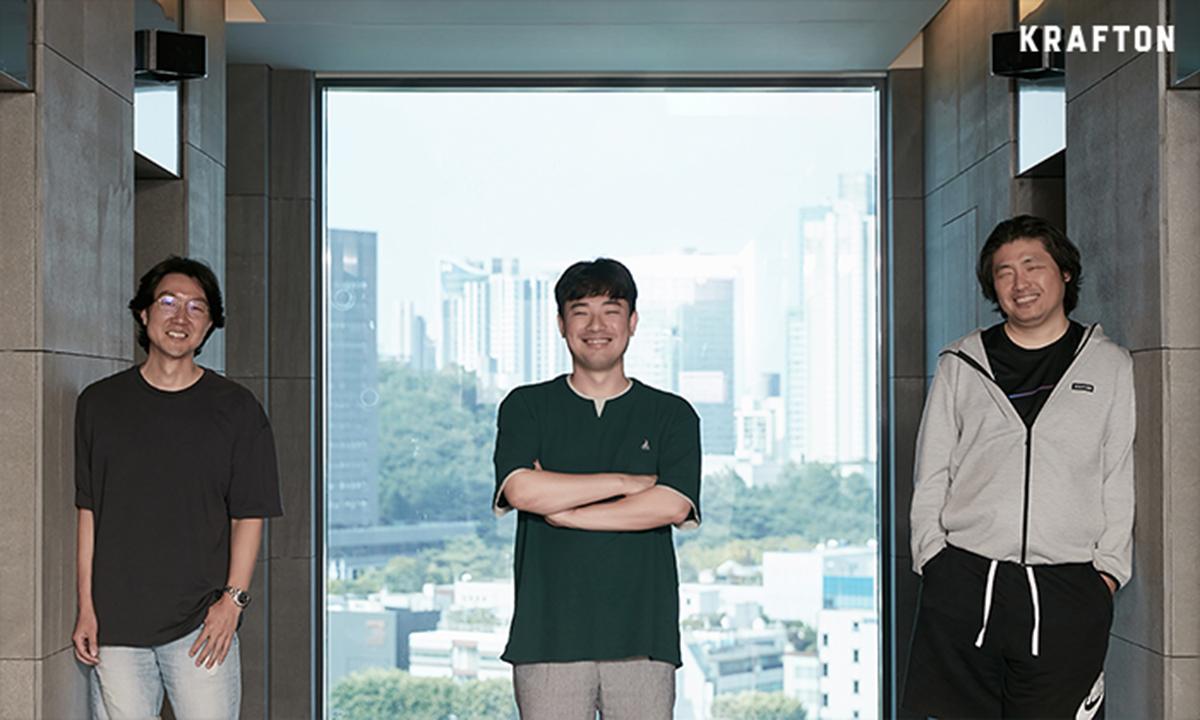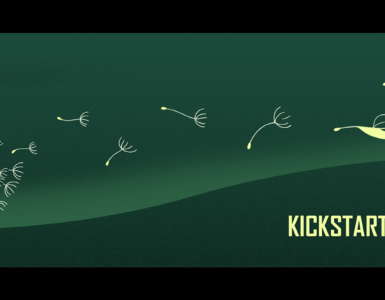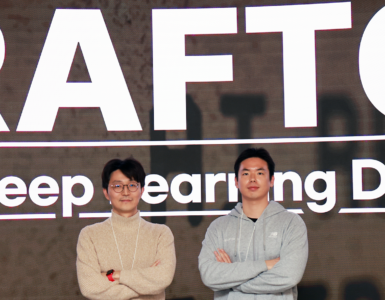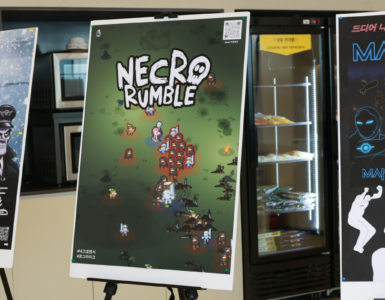An interview with 3 team leaders at KRAFTON SP2 Batch 1
Deep learning is garnering attention as a core aspect of artificial intelligence (AI) technology. Here are group of developers who are seeking to use deep learning technology to create fun for new games. KRAFTON is currently operating an incubation program called “Special Project 2 (SP2).” From Batch 1 in 2020 to Batch 3 today, a dozen teams studied deep learning technologies and combined them with new game ideas to prove the core fun in a process that continues to date. In order to continue this process of taking on new challenges, KRAFTON is looking for new teams for Batch 4. We interviewed three team leaders of Batch 1 — Aram Seo, Jiho Kim, and Seungyong Shin — who led SP2’s history of pioneering over the past two years.
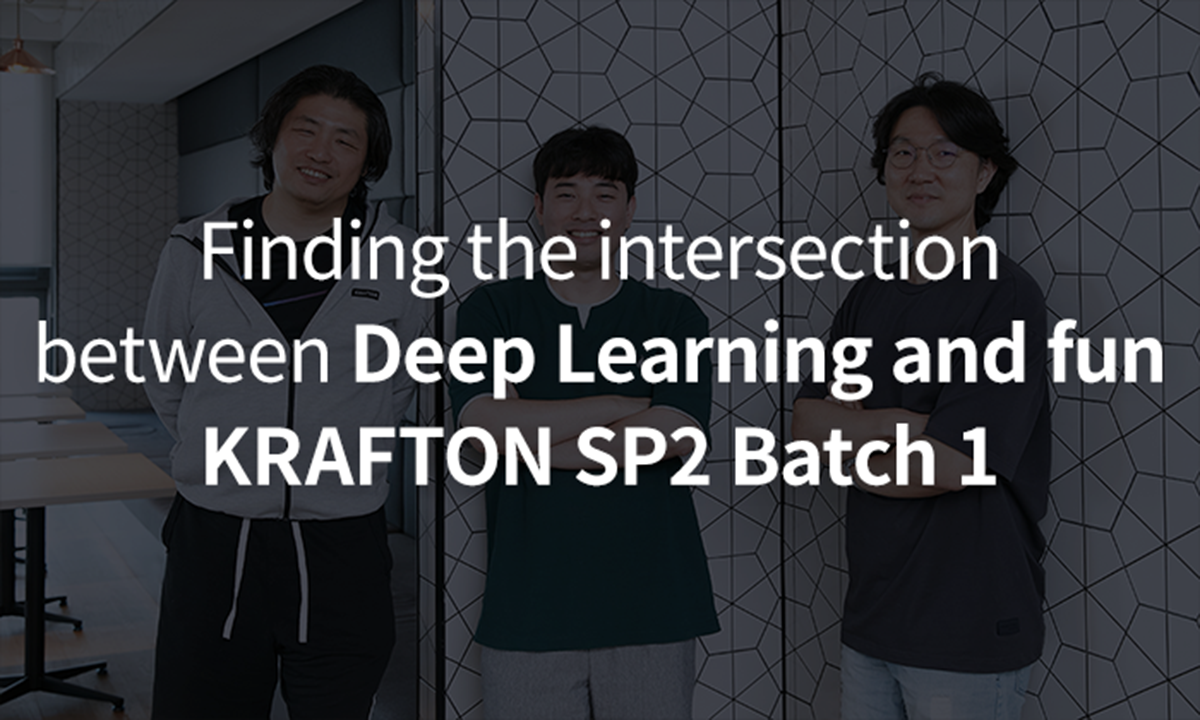
Hello, it’s a pleasure to talk to you today. Would you mind introducing yourselves briefly for the readers?
Aram Seo (Seo): Hi there, I’m Aram Seo, the leader of Team A1 under SP2. I originally started my career as an engineer and developed a mobile rogue-like indie game before joining SP2. Before that, I launched my own startup and worked as a project manager for a game company before that. Other than that, I also have experience as a director for a new game development project.
Jiho Kim (Kim): I’m Jiho Kim in Team X1. I have a pretty long résumé, starting with text-based MUD games back in the day. I also participated in the development of a social game aimed at female users, as well as a project that recreated the entirety of Seoul as a digital VR environment. After that, I launched my own company to develop social games and VR games.
Seungyong Shin (Shin): I’m Seungyong Shin from Team S1. At first, I helped develop a mafia-themed real-time strategy game, similar to StarCraft, at a startup launched by my friends. Later, I was a member of the team that developed the game “Yogurting” and worked on “TERA” at Bluehole Studio. Other than that, I was a developer for a number of PC and mobile games.
I started my career as a developer as a client programmer. I thought that I had to study computer science if I wanted to make games, so I learned to code and became a programmer. I’m one of those people who realized later on that what I really wanted to be was a game designer.
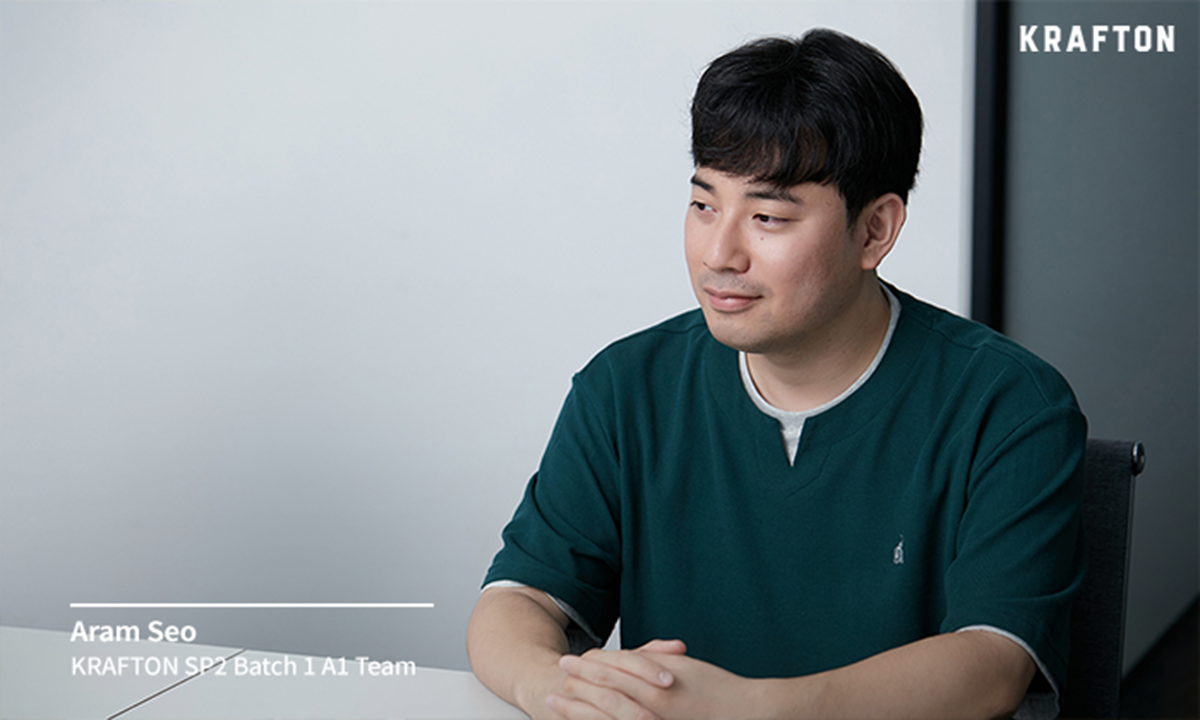
I imagine that all three of you have gone through a lot in the past year. Could you tell us a little bit about that?
Seo: First of all, I didn’t have time to get my hair cut for half a year, which is why it was so long now. (Laughs) I got a neat trim for this interview. Anyway, as it happens with every project, it’s not easy to prepare for the milestone. We worked really hard. Looking back, I think we were able to do that because all of our team members felt a sense of ownership in the project.
Kim: Our team conducted two projects on the theme of allowing users to talk freely with the characters, where we had an interesting experience in which something we couldn’t do before suddenly became possible. It was fun, but also a tough process.
Shin: If we were making the kind of game that we’ve already made several times before, we could do most of the calculations in advance. But when you’re developing games based on deep learning, it’s impossible to know whether it will work or not until the end product comes out. For example, we tried to generate maps using deep learning, but its initial quality was essentially trash. That was a real panic moment. Later, we began to produce some successes, but the few months we spent in the process felt very dramatic.
I’d like to compare deep learning development to raising a child. A child usually learns to talk within five years or so, but deep learning never tells us why something works or doesn’t work. (Laughs)
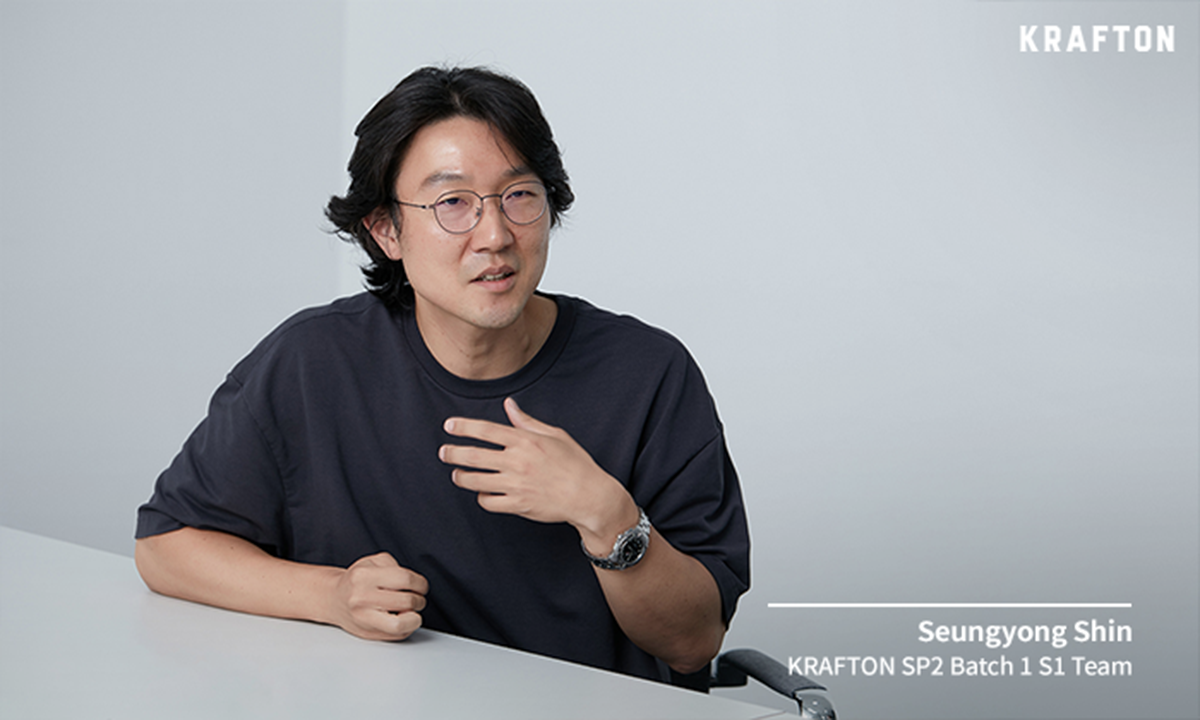
I’d like to hear about your current projects.
Seo: “Project Evil Plan” is a 2D open-world action RPG. The player becomes a hero who fights the evil overlord, where the key point is that the evil overlord makes moves autonomously. This means that the evil overlord doesn’t move according to a set pattern, but instead makes judgments based on the situation and moves of its own accord. The evil overlord plans appropriately, moves and speaks in line with the changes created by the player on a procedurally generated map. This allows players to feel as though they’re dealing with a live character, which offers a different experience with each playthrough.
Shin: “Foonda” is basically a logic-based puzzle game that requires you to use your brain. It conceptually applies deep learning to constantly generate new maps and present new stages that players haven’t experienced before.
Kim: We made a pretty grandiose start to our project, under the concept of creating an “open character,” where players engage a character in open-ended conversations. Depending on how the conversation unfolds, the character’s behavior changes and the subsequent story changes, too. The character in “Wish Talk” was designed to be closer to a child. It’s like a doll that can hold a conversation at the level of a child aged about seven to twelve. The main storytelling structure of the game is befriending the character and granting its wishes, but now that we look at it, it’s basically become a babysitting game. (Laughs)
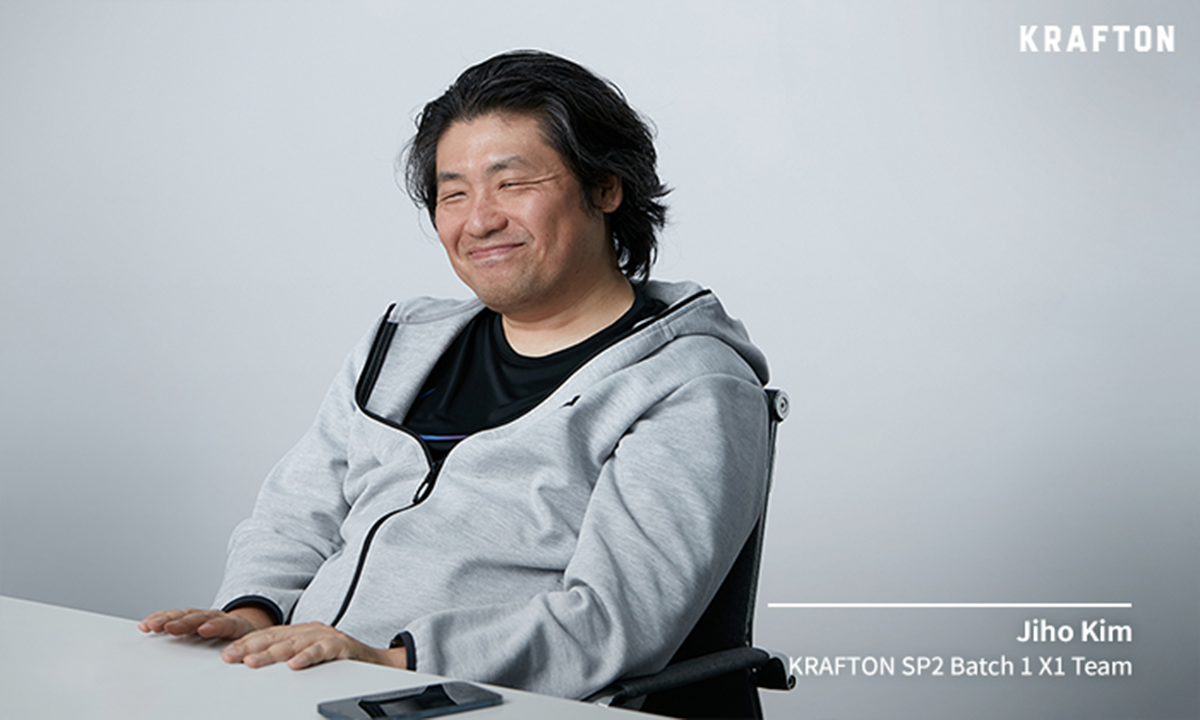
Could you talk about your respective teams and co-workers?
Shin: The majority of my team members are people that I’ve already worked with in the past. We were all fresh-faced newbies back then, but so much time has since passed that we’re looking towards retirement now. (Laughs) We all gathered here to work on something that we like for the last time, just like me. We follow the agile working method where we create a new build every day, play it together, and share feedback. To be honest, I’ve never seen this kind of style actually working out in reality. Thankfully, in this project, it worked out despite conducting a significant portion of the work online due to the pandemic. That’s why I think I have such a wonderful, competitive team.
Seo: I first started Team A1 with a colleague that I’ve been through all kinds of ups and downs with, from high school to indie game development, launching a startup, and developing new games. We formed a team with another co-worker with a similar vision and ideas to us, as well as R&D experience in related core technology, after we miraculously reestablished contact after ten years. Finally, we were joined by another colleague who is a core target fan of the game that we’re making. We’re a small-scale but passionate team where we all work to the best of our ability.
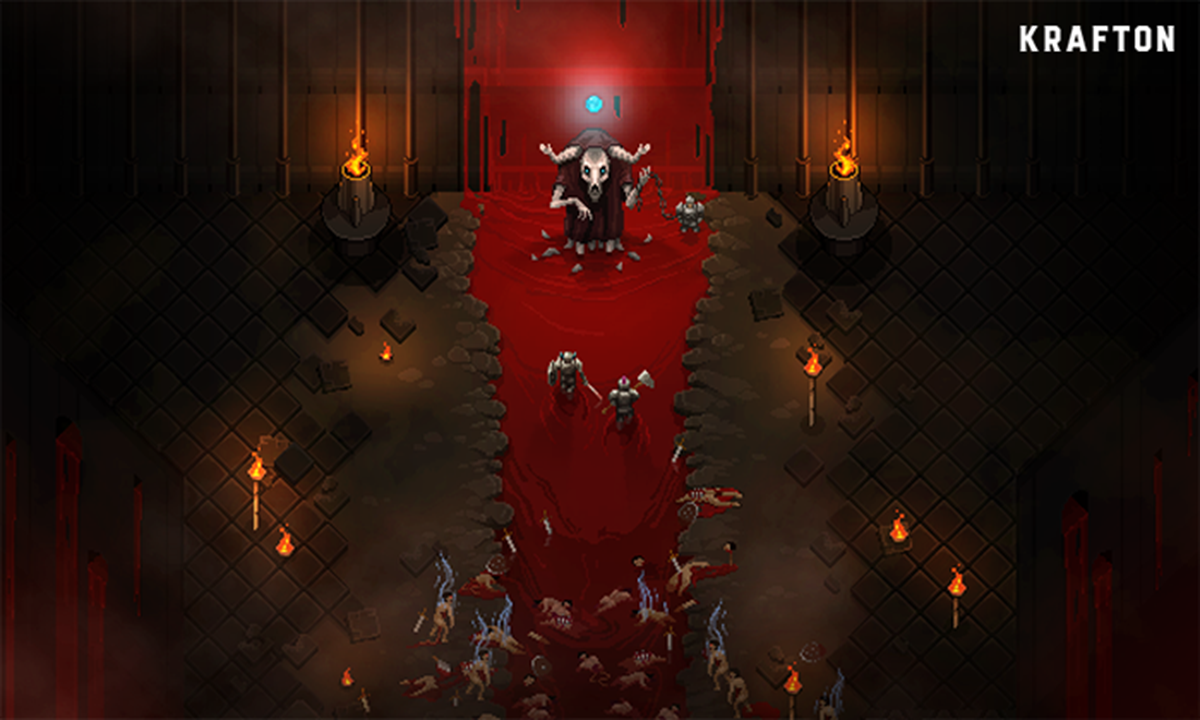
What is the “core fun” that you would like to prove in your respective projects?
Seo: We wanted to turn the experience of a hero facing off against an evil overlord into a replayable experience in the narrative sense. Replayability and narrative are, in some regards, mutually exclusive terms. After all, we usually get bored of a story once we’ve heard it already. As such, many rogue-lite games present replayable narratives by separating the story into fragments and telling it piecemeal. However, even in those kinds of games, the final boss retains a passive role in the narrative without creating replay value from a narrative standpoint. That’s why we gave our evil overlord free will and mechanisms to empathize or emotionally connect with players depending on their choices. Through this dynamic, we wanted to see whether players would come to understand the evil overlord’s actions or feel differently once they recognize the evil overlord as a true character.
Kim: The main content of our game is to engage in conversations with a character, which necessitates a number of things. We need to create narrative elements such as the character’s personality, past experiences, and future desires. We also need to create the feeling of consistency in conversations. We’re aiming to establish emotional connections, in other words. Players will gradually get to know the character better, resembling the conversation between the prince and the fox in “The Little Prince.” As they get to know each other and players share more about themselves with the character, they’ll begin to form an emotional attachment to the character.
Shin: We have two. First, it’s an appropriate difficulty level. We believe that the fun part of playing games is learning. We see fun as the exhilaration that players experience when they understand the rules, play more efficiently, and achieve rewards. In this regard, the most crucial part of game design is deciding the level of difficulty that we wish to set. If it’s too easy, players will get bored, but if it’s too difficult, players will give up. We tried to solve this problem using deep learning. As long as we design the learning curve well, the game will present to players with puzzles at the appropriate difficulty level.
The second is the social aspect. Most puzzle games have set stages, where my level 100 is the same as another player’s level 100. That means there’s a high possibility that someone will make an answer sheet for our puzzles. Our game creates new puzzles in real time, so there can’t be an answer sheet for puzzles that we haven’t completed yet, and the only way to help someone is to solve the puzzle on their behalf. This process in which they share new problems and solutions is where we think the social aspect will emerge and add to the fun.
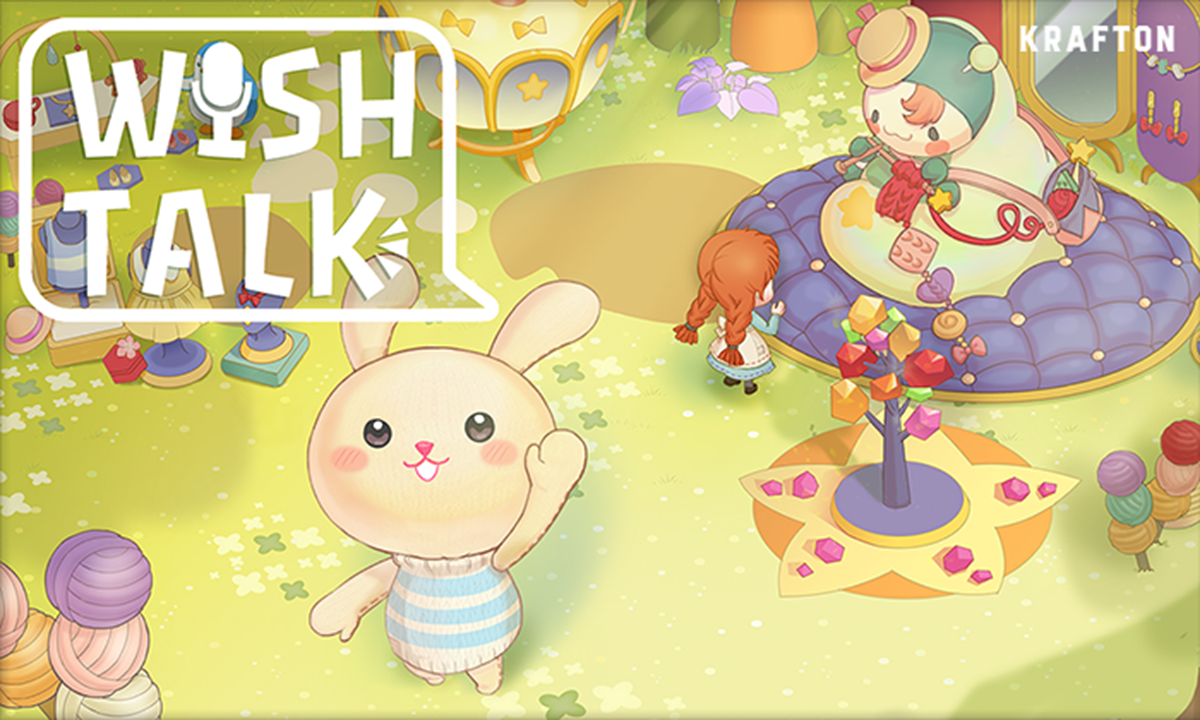
When did you discover a possibility during the development process?
Seo: We recently held a testing session with external testers, where the last person to participate in testing was completely expressionless while playing the game. I thought to myself, “Oh, crap! That’s not good.” But, when I looked closely, the tester’s arm kept twitching while playing the game. That’s when I realized that the tester was actually deeply immersed in the game, which gave me a sense of achievement.
Shin: We constantly test play our game within the team, but at some point, the game started generating puzzles that our team members couldn’t solve. That’s when I first started to think that this game was worth making. Secondly, we launched our game on Steam a while ago, then we found that a German YouTuber had livestreamed our game for ten hours without sleep and continued doing that for days on end. That made us realize that there are people out there who enjoy our games.
Kim: There was one time that the character we created wrote me a poem during our conversations. It was a simple, childish poem, but that moment struck me deeply. I became convinced that presenting players with these experiences through conversations with our character would create lasting impressions. Also, I felt that our game had potential for success when testers responded in a post-testing survey that they agreed that character personalities and narratives were foundational aspects of our game.
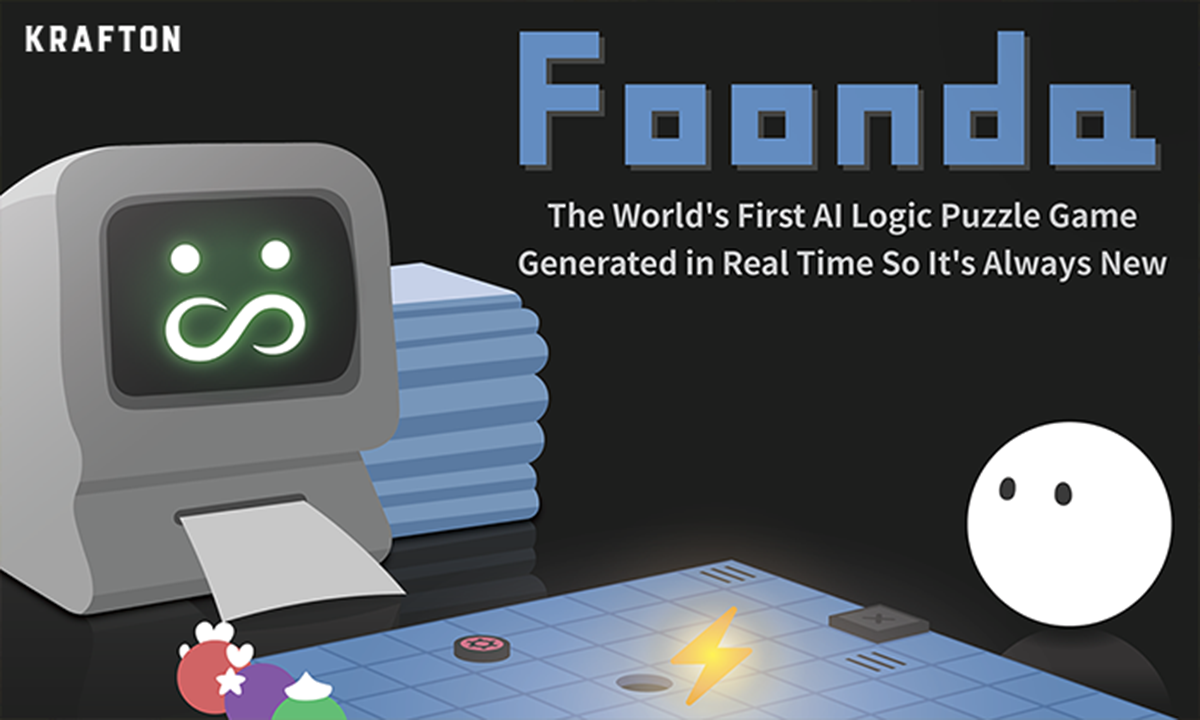
Do you feel that, in terms of game design, it’s important for players to personally realize that your game created enjoyment using deep learning? Or is that a misconception?
Seo: I think there are certain expectations when we emphasize buzzwords like AI or deep learning. Having said that, the focus of our development cycle was to connect with the user’s sensibilities and organically generate contexts, rather than making them see how clever these deep-learning-based characters and systems are. This allows players to face a livelier evil overlord. In fact, one of the build feedback responses even said, “I don’t know what deep learning is, but I just really want to beat that annoying final boss.” In this regard, I felt that it was important to focus on whether players recognize the evil overlord as a character and whether they experience emotional shifts in an organic way. It’s true that we used deep learning to create new ways of having fun, but I think it’s a little different from the perception that most people have towards deep learning.
Shin: There is a certain response to the term “deep learning.” But, even without deep learning, we can confidently say that we have a staggering number of stages in our puzzle games to the point that every stage you play will be completely new. I think that’s more of a selling point for players.
Kim: Deep learning is just a piece of technology, whereas what our players get is an experience. We emphasized that our game offers the experience of freely speaking to a video game character, and the actual feedback we received was closer to “Oh, it was just like talking to a real, live person,” rather than “Wow, deep learning technology is incredible!” What I mean is that it feels more right to focus on the experience than anything else.
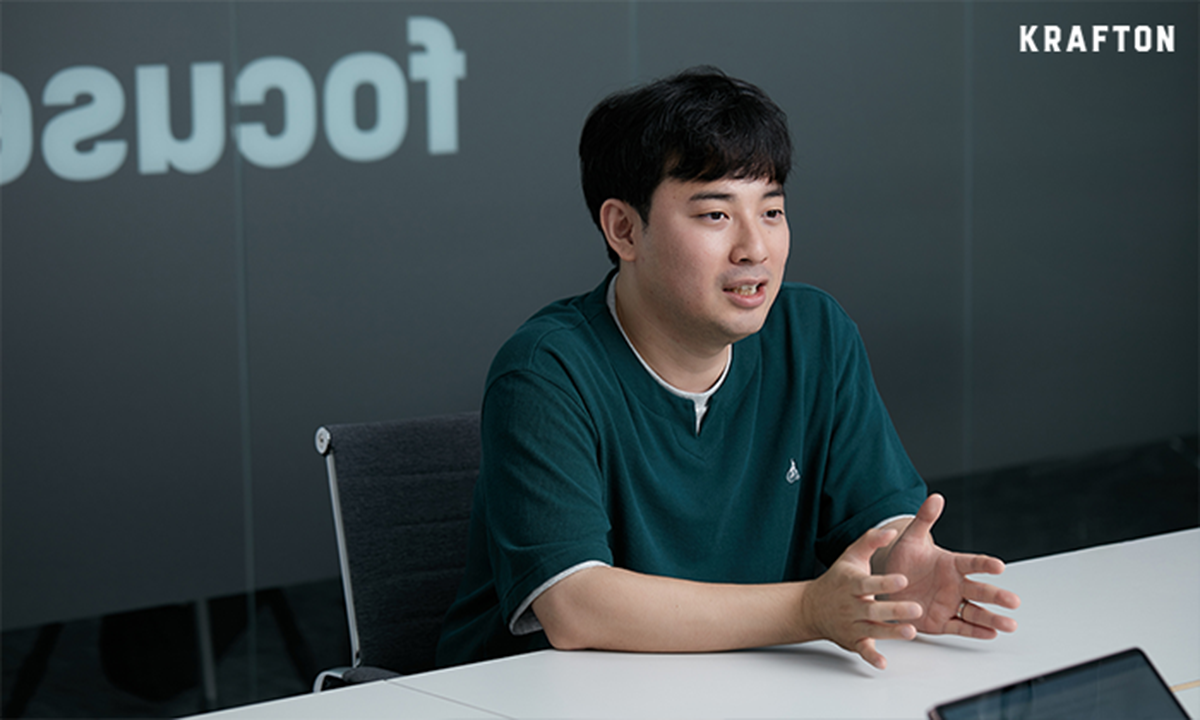
What are some enjoyable games that you look back on and aspire to?
Seo: My all-time favorites are “Portal” (2007) and “Papers, Please” (2013). I think both of those games presented narrative experiences that can only take place in video games. Oh, you also can’t forget “FTL: Faster Than Light” (2012). It’s a space-based rogue-like game where players command their own spaceships. It also presents a narrative experience that’s only possible in a game, but since it’s a rogue-like game, it gave me a different experience every time. That’s why I’m still playing it, eight years later. In short, I would like to make games where such game-exclusive narrative experiences can be enjoyed repeatedly.
Shin: I’d answer your question in a slightly different way. The first time I felt that I wanted to make video games was when I played “Final Fantasy II” (1988). I couldn’t even speak Japanese at the time, but I still had a lot of fun. The kind of game that I would like to make is one that has the potential to change someone’s life. I want to make an emotional impact of some kind, like how I felt when I played games like “The Legend of Zelda: Breath of the Wild” (2017) or “Super Mario Odyssey” (2017). These games always impress me and make me wonder how they were made. I think that’s what makes a fun game.
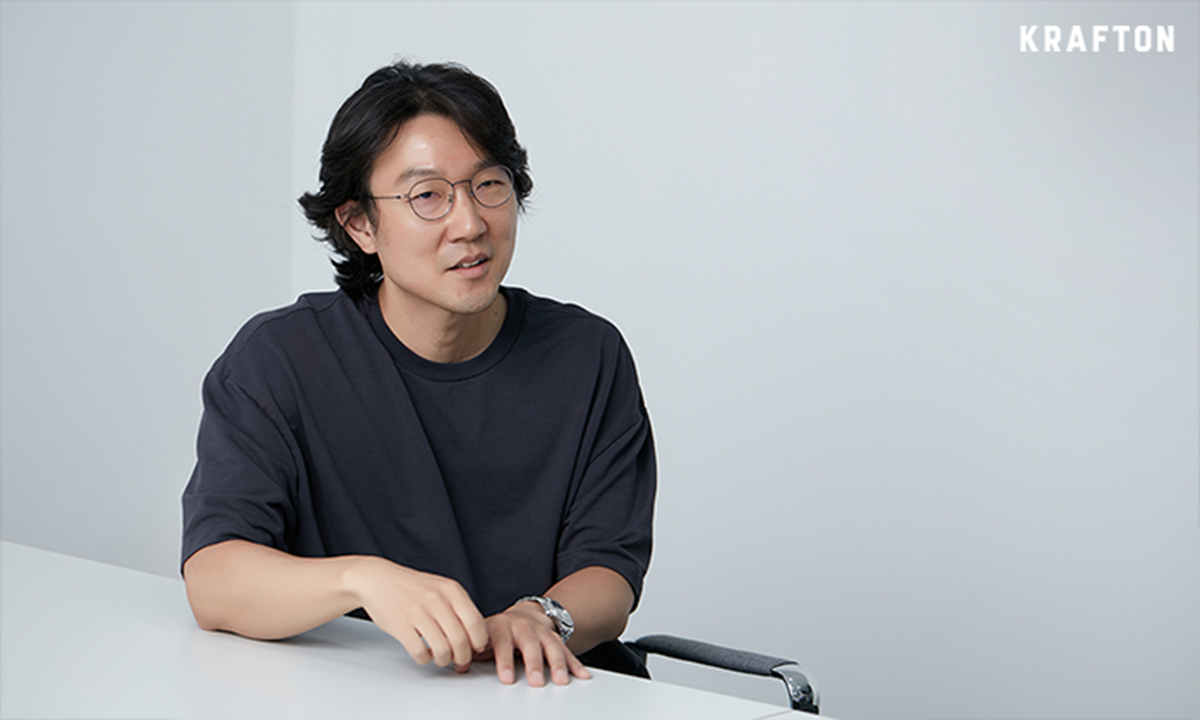
You must’ve gone through many trials and errors in the last two years and learned a lot in the process. Could you tell us about a memorable experience during that time?
Shin: I think the lesson I learned is that “When you think you’re finished, you’re only just getting started.” A lot of the deep learning field is public, so we were able to use open-source code. Of course, we didn’t just copy and paste it, but instead had to edit the code for our purposes. Unfortunately, this proved to be quite difficult, especially to edit the code to the specs that we wanted. That was a major oversight on our part, which incurred a huge cost.
Seo: When we first began our project two years ago, we knew nothing about deep learning. At the time, it was mostly just a research topic in the video game industry. As such, it was exceedingly difficult to make sure that we could apply such research outcomes to use in video games. Therefore, we strived to explain the role of deep learning as clearly as possible and resolved issues from a game design perspective as well as by using deep learning. Naturally, we still experienced numerous trials and errors despite our efforts.
Kim: As I mentioned earlier, trying to use deep learning is a lot like taming an animal that can’t speak. We can teach a puppy to sit and stand, but we can’t teach it to solve math formulas. With deep learning, even when we feel like we’re on the verge of something, it’s almost impossible to know how far we can take it. In our project, I think it’s necessary for us to understand the extent to which we can apply deep learning and ensure that it aligns with game design.
If you could travel back in time to when you first started at SP2 two years ago and give yourself a piece of advice, what would it be? Would you make the same decision again to join SP2?
Seo: I think I would make the same choice, even if I could go back. Of course, I was a little skeptical at first. I felt apprehensive about whether I could really start something new while still working under a company. Having said that, I think we were able to take the project in a direction that we envisioned and believed in, so I think I would join SP2 again if I could travel back in time.
The only thing is, looking back, we did make a few blunders during the process, and I do regret some of the time we wasted. I wish we’d kept focus on our direction and made more stringent checks. That would’ve saved me a lot of weight gain and stress. (Laughs)
Shin: I would definitely do it all over again. I don’t think there’s a better experience than being told to do whatever I want while getting paid a salary without needing to start my own company. If I went back two years in time, however, I would probably do some things a little differently, because I feel that we still haven’t delved closely enough to the essential notion of combining innovative deep learning and video games. I think I would make more attempts to that end, if I could go back. Obviously, the chance of failure would still be fairly high, but I’d still like to open that pandora’s box.
Kim: I sometimes think back to the decisions I made two years ago. Did I really make the best possible choice? What if I’d chosen another path, other than a linguistic model? What other options were there? Still, I think I made the best choice that I could at the time. So, I’m not sure that much would change if I went back to two years ago. Although, if the question was whether I would restart the challenge we took on two years ago in the context of today, that changes things because there have been some striking advances in the field of deep learning. In that regard, I think I would use these new technologies to take on fresh challenges.
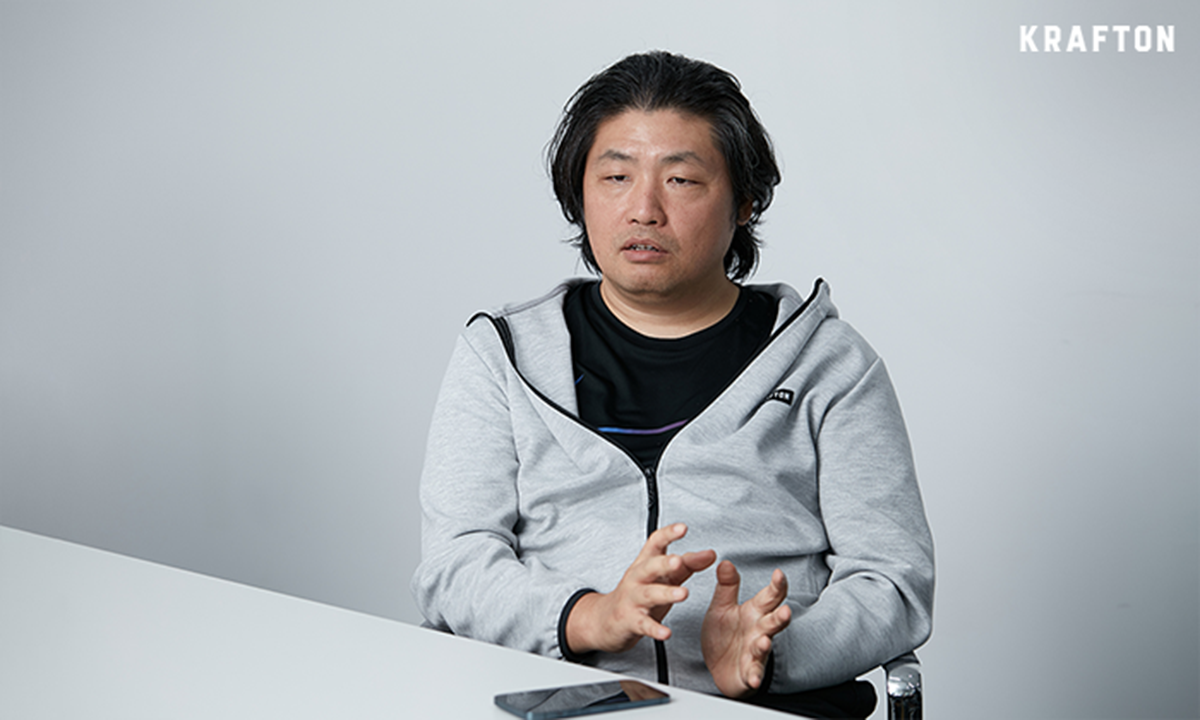
Do you have any advice for your future colleagues who will take on a new project under Batch 4?
Kim: The first would be “Don’t use reinforcement learning.” (Everyone laughs) Everyone starts down that path because it looks easy and interesting, but I doubt that it’s a good thing to invest too heavily in it, other than allowing some brief learning to take place. It’s basically like taming a wild animal that just refuses to listen.
Seo: Our goal is to make new games using deep learning. What I mean is that we don’t have to use deep learning to solve every single problem. Another piece of advice is that no one else will take responsibility on your behalf. SP2 may offer broad autonomy, but that comes with significant responsibility. Finally, it wasn’t easy to assemble our team during project implementation. As such, I think it’s easier to put a team together at least partially before joining a project.
Shin: I think we’ve only focused on our difficulties, failures, and disappointments so far, but I’d like to talk about something different. I would like those who take on new challenges to dream a little bigger. It’s no fun to think too small from the start. Instead, dream big, and I hope SP2 will support such efforts in return.
Okay, last question. What are your future goals as game developers?
Seo: I would like to make a game where players feel like they’re really traveling and adventuring with characters. Considering the rapid advancement of AI at the moment, I think this is going to happen in the near future. Once players start to experience that, I think it will become a new measure of a game’s success, just like how “Grand Theft Auto 3” (2001) set a new standard for open-world games.
Kim: As a big cyberpunk fan, I often rewatch the Blade Runner series. In the series, there’s a constant question of whether something is real or fake. I would like to create an experience where players feel that characters are alive and engage with them in unique ways. That’s the kind of challenge I’d like to take on.
Shin: I often think that I would like to have fun making games with my work colleagues and for them to feel happy in the process. I know this might sound naive, but I’d like to keep that mindset going forward.
